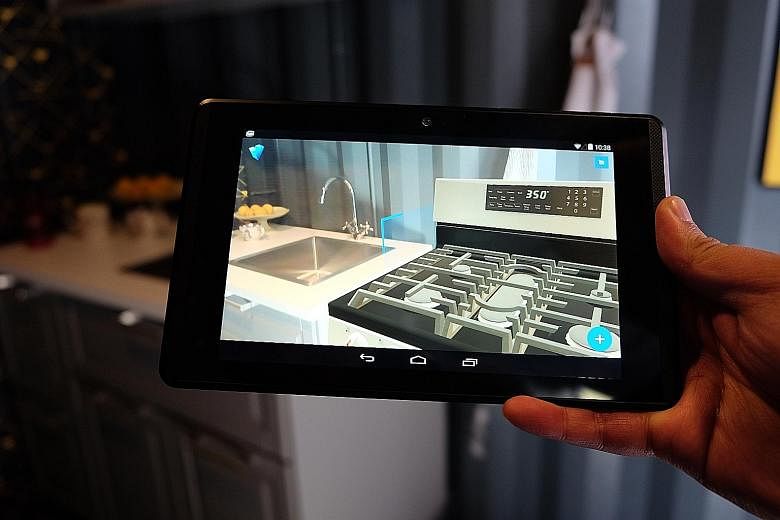If you have ever been furniture shopping and wish you could see how that new sofa would look in your house, Google's latest augmented reality technology (AR) may be what you need.
The tech giant announced updates to both its AR and virtual reality (VR) technologies at its I/O developer conference last week. They include details of a new AR phone and VR support for Google's upcoming Android operating system.
AR refers to the addition of digital enhancements on top of existing reality. For example, a navigation app using augmented reality can have users viewing the street in front of them through their mobile devices, but also seeing a virtual arrow floating on screen guiding them to their destination.
Google's Project Tango is the foundation of its mobile AR technology, as it aims to equip mobile phones with powerful AR capabilities through a combination of wide-angle camera lens, infrared projectors and special motion sensors to get an accurate reading of the outside world.
Early adopters of Project Tango include furniture stores, such as US hardware store Lowe's. Consumers can use AR to help them shop for furniture, for example, by pointing their phones at the place where they want that new sofa or table.
With AR, they can then overlay that sofa or table on the empty space and see for themselves how it looks and fits in their home, and even adjust the item's position and colour.
The first Tango-ready phone, made by Lenovo, will be unveiled at Lenovo Tech Week next month.
Google is also moving beyond AR with the development of its mobile VR system, called Daydream.
Unlike AR, VR creates an entire virtual world for the user and is usually accomplished through the use of VR headsets or goggles.
The user may move his head around in the real world to look around in the virtual world.
Google's upcoming version of its mobile operating system, Android N, will come with VR support built directly into the system. Users can hop on to an updated YouTube app to find VR videos to immerse themselves in. There will also be games and apps that take advantage of VR, which users can find in a new feature in Android N called VR Mode.
The Daydream ecosystem includes a headset and hand-held controller. The earliest of such devices are due to be out later this year, with Google releasing a design reference for manufacturers and also manufacturing its own version of the headset and controller.
Daydream will require phones to be equipped with the necessary sensors and displays for a smooth VR experience.
Manufacturers like Samsung, HTC and Xiaomi are already releasing such phones later this year, which means users could be plugging into virtual worlds before the year is over.


